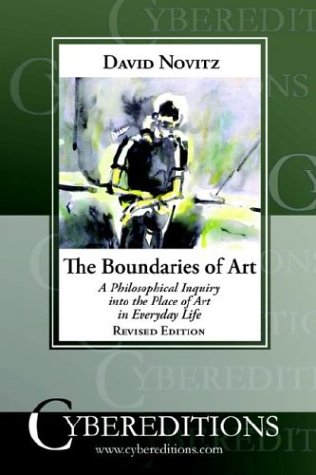

Most ebook files are in PDF format, so you can easily read them using various software such as Foxit Reader or directly on the Google Chrome browser.
Some ebook files are released by publishers in other formats such as .awz, .mobi, .epub, .fb2, etc. You may need to install specific software to read these formats on mobile/PC, such as Calibre.
Please read the tutorial at this link: https://ebookbell.com/faq
We offer FREE conversion to the popular formats you request; however, this may take some time. Therefore, right after payment, please email us, and we will try to provide the service as quickly as possible.
For some exceptional file formats or broken links (if any), please refrain from opening any disputes. Instead, email us first, and we will try to assist within a maximum of 6 hours.
EbookBell Team

0.0
0 reviews
ISBN 10: 0877229287
ISBN 13: 9780877229285
Author: David Novitz
In this provocative book, David Novitz reconsiders the complex relations between art and life. He rejects the view that artwork should be judged in isolation from its historical and cultural contexts, pointing to the many ways in which the cultural milieu affects choices made by the artist. He challenges the commonplace notion of art as something removed from daily life by invisible, yet rigid boundaries. Rather, Novitz argues, much art is unrecognized as such because it addresses issues and preoccupations of everyday life and is therefore viewed as "low brow" or merely popular. In fact, the author contends, not only does art invariably reflect our lives, but it often consciously attempts to influence our lives.
Popular genres like cinema, advertising, pop music, erotica, conversation, gardening, cooking, and carpentry are all seen as arts, and Novitz traces the differentiation of these from the so-called fine arts to the Renaissance, when moneyed classes patronized artists as a form of social self-promotion. This separation was reinforced in the nineteenth century, with the emergence of the aesthetic movement and its distinction between "high" art and the "popular" arts.
By providing a sustained and lively challenge to the traditional boundaries of art, Novitz demonstrates the detail and explains the extent of the integration of art into everyday life. He does not, however, endorse the postmodernist claim that there are no boundaries between art and life. Instead, he argues that our conception of the relations between art, life, and philosophy need to be rethought in a way that reflects more adequately the role that both art and philosophy play in our lives.
At its most powerful, Novitz argues, art is a form of seduction that can destabilize our commitments and entire world views, and does so in ways that are unavailable to rational persuasion. While carefully considering but rejecting Oscar Wilde's claim that "Life is in fact the mirror, and Art the reality," Novitz makes the case that art, properly conceived, reaches deeply into our lives and is profoundly influential.
Part I: Historical and Philosophical Foundations
Chapter 1: Classical and Traditional Boundaries
Chapter 2: The Romantic Revolt and the Expressive Turn
Chapter 3: Modernism and the Self-Referential Art
Part II: Challenging the Conventional: The 20th Century and Beyond
Chapter 4: The Readymade and the Conceptual Shift
Chapter 5: Performance, Process, and Ephemeral Art
Chapter 6: Art, Technology, and New Media
Chapter 7: Art and Its Contexts: Social, Political, and Cultural Boundaries
Part III: The Future of Art's Boundaries
Chapter 8: The Expanding Field: What Else Can Be Art?
Chapter 9: The Erosion of Boundaries: Interdisciplinarity and Hybrid Forms
Chapter 10: The Persistence of Boundaries: Why Do They Still Matter?
the boundaries of art
what are the boundaries of art
pushing the boundaries of art
the art of setting boundaries
boundaries of the axillary artery
Tags: David Novitz, Boundaries, Art